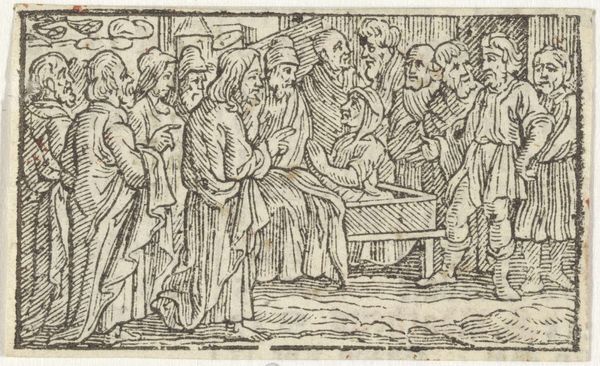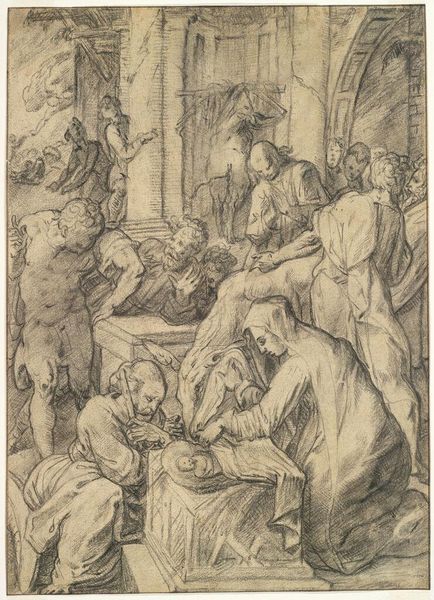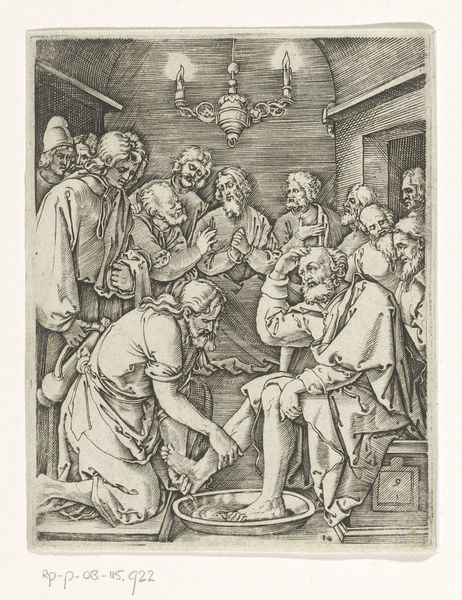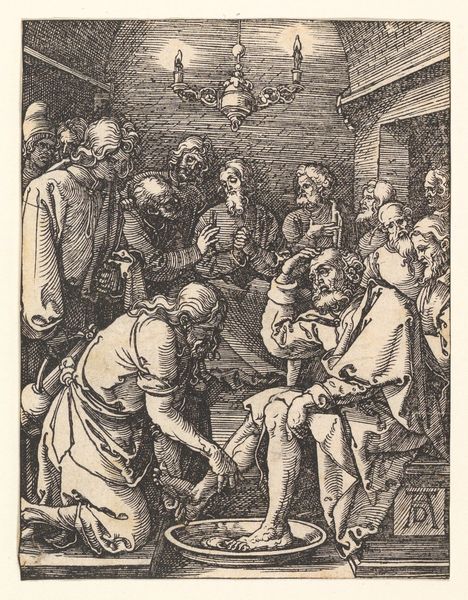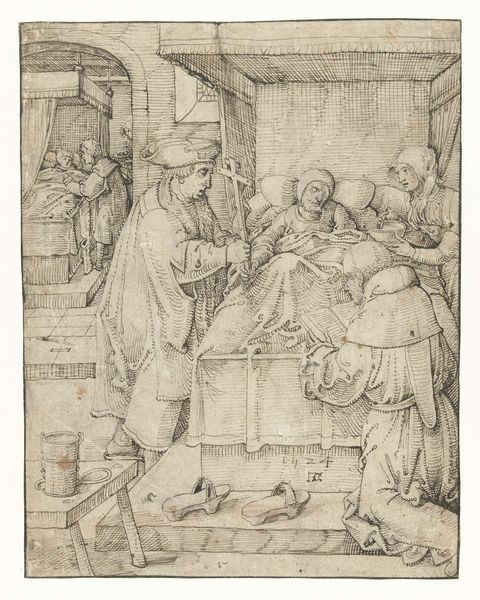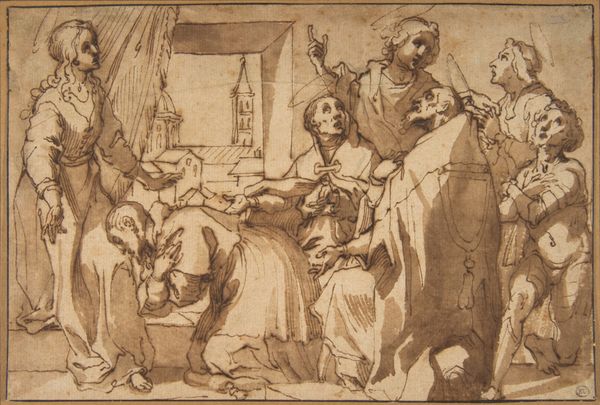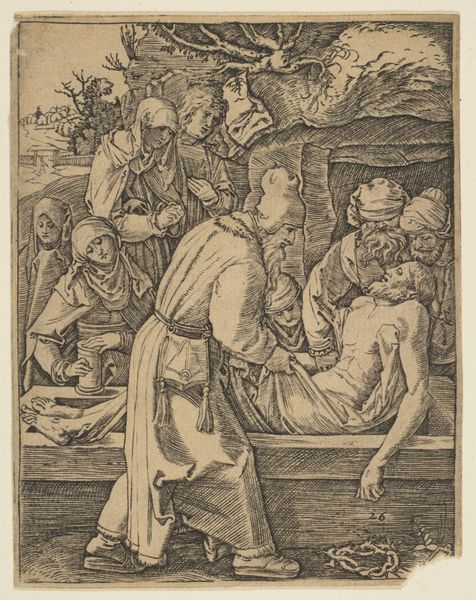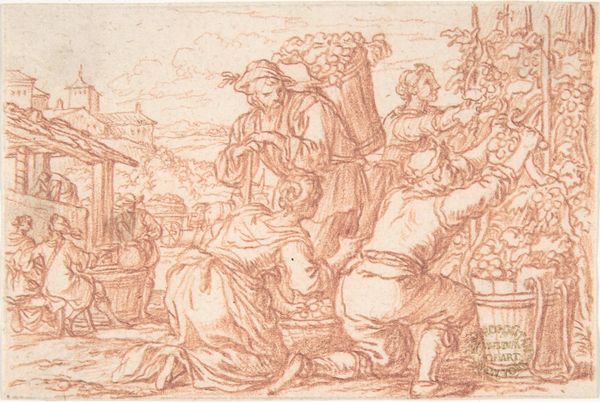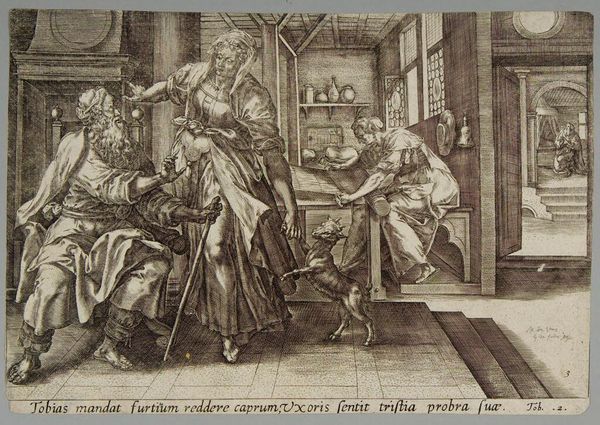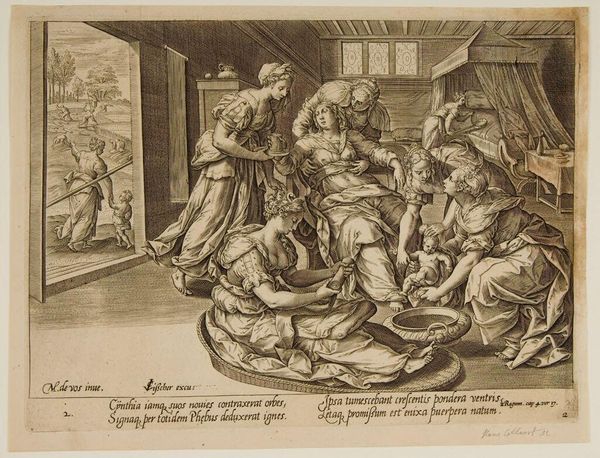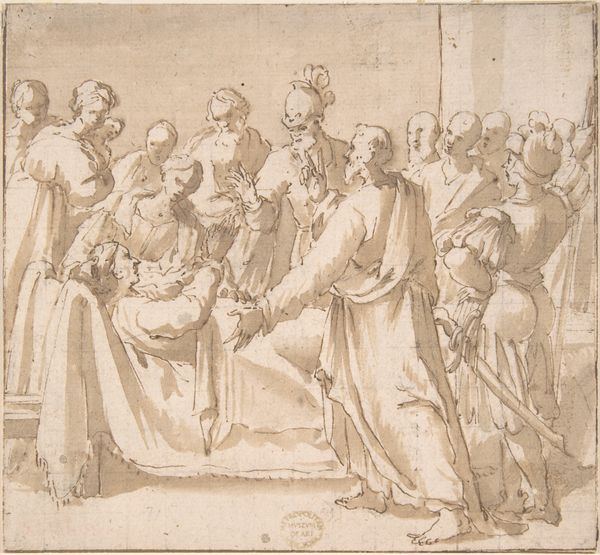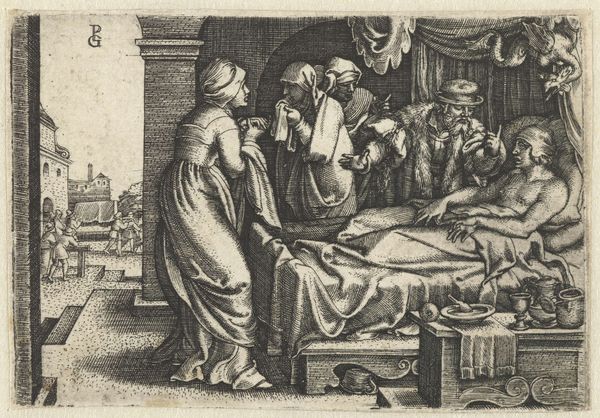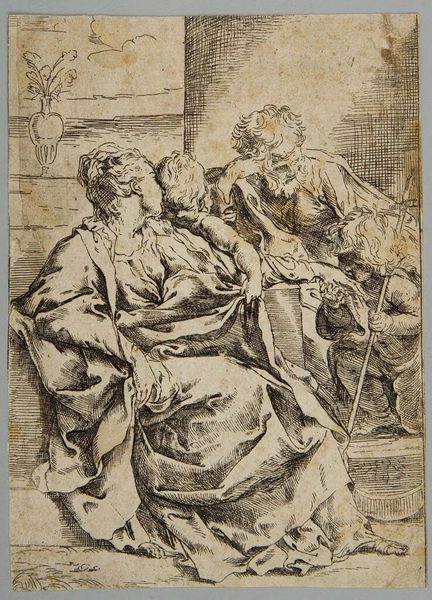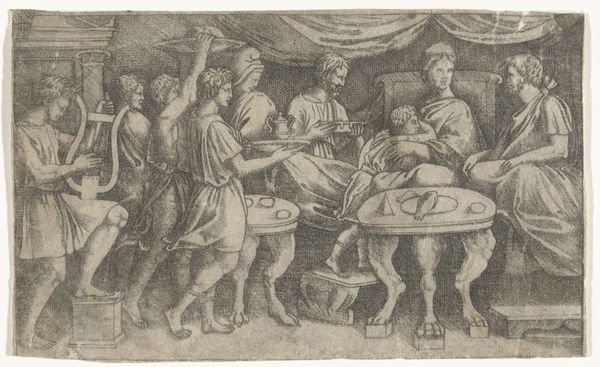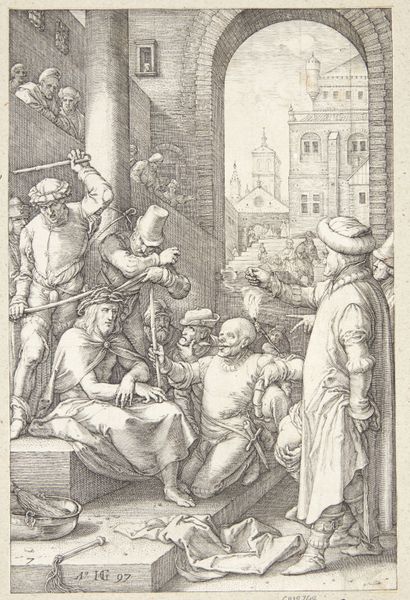
drawing, print, ink, woodcut, pen
#
portrait
#
drawing
#
ink drawing
#
narrative-art
# print
#
pen sketch
#
figuration
#
11_renaissance
#
ink
#
woodcut
#
christianity
#
pen
#
history-painting
#
northern-renaissance
#
christ
Copyright: Public domain
Curator: This is Albrecht Dürer's "Christ," created in 1521. It is rendered with pen and ink. Editor: The high contrast between the hatched, shadowed figures and the white of the page lends the entire scene an ethereal yet mournful quality. The meticulous lines composing each figure and fold almost appear to vibrate on the page, conveying intense emotion. Curator: Indeed, Dürer’s technical virtuosity is undeniable. Notice how the intricate cross-hatching not only defines form and shadow but also contributes to the overall emotional weight. Semiotically, the stark contrast could be read as the binary between life and death. Editor: Placing the piece within its socio-political context, we must remember that the Northern Renaissance, and specifically Dürer’s Germany, was undergoing immense religious upheaval with the rise of the Reformation. Consider how such art shaped devotional practices and public perception of these Biblical narratives during such volatile times. The figures surrounding Christ bear expressions indicative of this collective crisis and personal grief. Curator: Looking at the formal composition, the figures carrying Christ are strategically arranged to lead the eye deeper into the space. Dürer expertly uses linear perspective to create depth within a predominantly two-dimensional medium. Also note that while it seems realistic, it is highly constructed through sophisticated deployment of ink and controlled line. Editor: Certainly, the controlled precision belies the social and spiritual anxieties it evokes. The piece becomes a potent artifact, encapsulating the profound uncertainties felt during a pivotal moment in Western religious history. Its existence within the Germanisches Nationalmuseum now also makes a statement about cultural and religious identity and how societies engage with contested histories. Curator: Considering the material aspect, the use of ink allowed for reproducibility, making this intensely personal vision of faith accessible to a wider audience during its time and to this very day. Editor: Indeed, seeing such complex interplay between personal devotion and a larger religious schism makes this print ever more affecting and historically significant to this day. Curator: Precisely, examining the stark lines and calculated composition leads me to contemplate its immediate emotive power but also Dürer’s ingenuity. Editor: And that very formal approach enhances one’s awareness of the historical tensions rippling underneath.
Comments
No comments
Be the first to comment and join the conversation on the ultimate creative platform.
